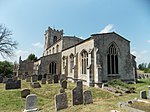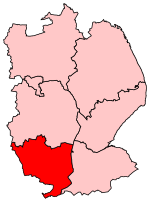Swayfield
Civil parishes in LincolnshireSouth Kesteven DistrictUse British English from December 2013Villages in Lincolnshire

Swayfield is a village and civil parish in the South Kesteven district of Lincolnshire, England. The population of the civil parish at the 2011 census was 316. It is situated just over 3 miles (5 km) east from the A1 road, 9 miles (14 km) south-east from Grantham and 10 miles (16 km) north from Stamford. It has approximately 138 houses.
Excerpt from the Wikipedia article Swayfield (License: CC BY-SA 3.0, Authors, Images).Swayfield
High Street, South Kesteven Swayfield
Geographical coordinates (GPS) Address Nearby Places Show on map
Geographical coordinates (GPS)
| Latitude | Longitude |
|---|---|
| N 52.794542 ° | E -0.529095 ° |
Address
High Street
High Street
NG33 4LL South Kesteven, Swayfield
England, United Kingdom
Open on Google Maps











